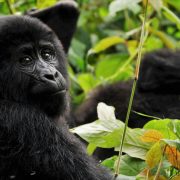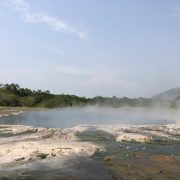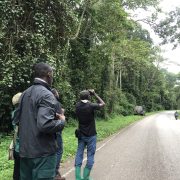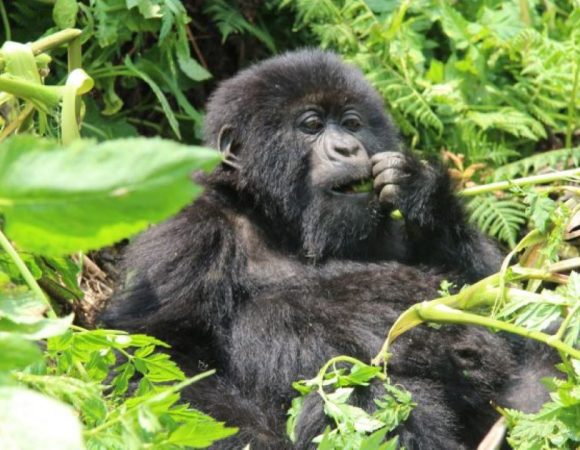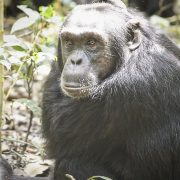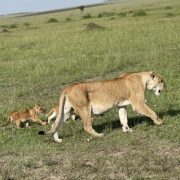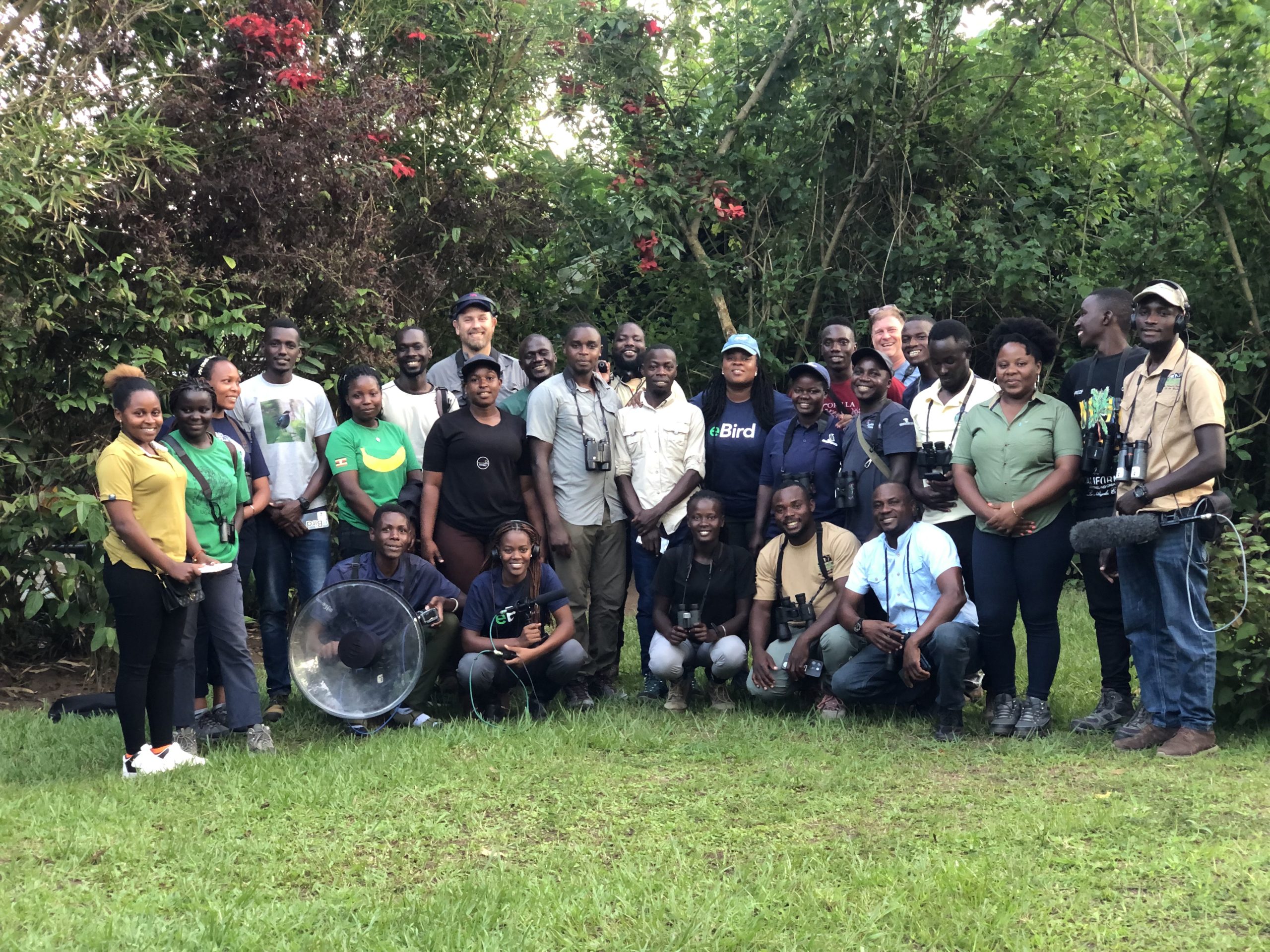
eBird Launches in Uganda : Exciting News, eBird Uganda
eBird Uganda is set to officially launch on the 16th of December 2024 and I had the opportunity to attend one of the workshops with fellow birders from Kibale National Park on 8th and 9th December, 2024. The workshop that was held in Kibale at Kibale Forest Lodge was part of a series of workshops that were organized before the official launch of eBird in Uganda. The news of the launch is exciting for the birding community in Uganda and is testament to the great progress of birding in Uganda. The main target of the workshops were local birders and birding enthusiasts in Kibale National Park, Bwindi Impenetrable National Park, Budongo Forest and surrounding areas.
The Kibale workshop started at 7:30 am on 8th December at Kibale Forest Lodge. The session started with introductions by the team that had traveled from Kampala and this included Marshall, Cullen (from eBird USA), Davis one of the top birders in Uganda, Abia who is a top female birding guide in Uganda and the rest of the team that traveled from Kampala. After the introductions we started the session led by Cullen who took us through an introduction to the eBird app, with connection to Wi-Fi from Kibale Forest Lodge a great percentage of us were able to download the eBird app to our phones and then sign up with our email accounts.
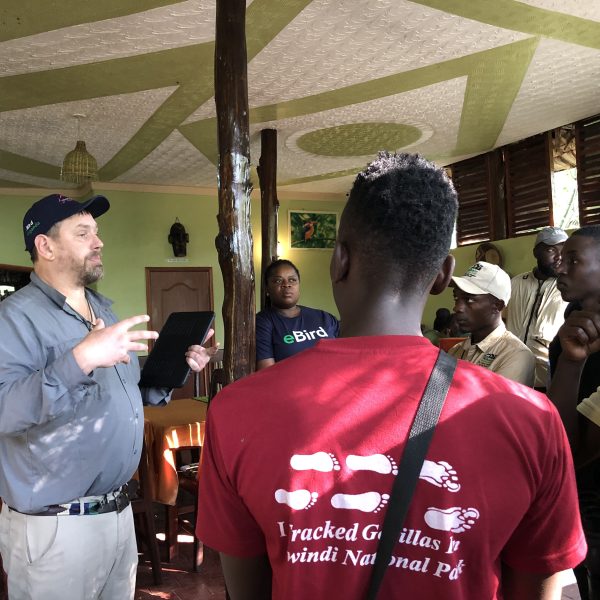
Cullen introducing the attendees to the eBird app and explaining how to use the app to enter data
We then went ahead to learn from Cullen the basics on how to interact with the app and how to use it to record our observations. Cullen and Marshall were extra patient with us and very good facilitators because they took the time to explain the interface of the app, how to use it to enter data, how to start a checklist and how to make sure that we are recording our observations correctly while in the field. Once a good number of us were able to download the app and learn the basics of using the eBird app, we then headed to the next activity which was a 1 hour bird walk. The essence of this bird walk was to bird while recording our observations to our individual eBird accounts so that we would be able to practice what we had learnt from Cullen and Marshall.

End of the first session as we prepared to go for the next activity
During this activity we were divided into groups of threes, I was in a group with Patricia one of the female bird guides in Kibale and Ian. Patricia was the leader of our group for this birding excursion.
We birded the BEARC (Bigodi Eco-tourism and Research Centre) trail where we were able to hear and look out for the following bird species;
Red-eyed Dove, Blue-spotted Wood Dove, African Green-Pigeon in flight, White-spotted Flufftail, Hadada Ibis, 2 African Harrier-Hawks in flight, Crowned Hornbill, Black-and-white-casqued Hornbill, Woodland Kingfisher, Yellow-rumped Tinkerbird, Double-toothed Barbet, Luhder’s Bushshrike, Gray-green Bushshrike, African Blue Flycatcher. Green Crombec, White-chinned Prinia, Green-backed Camaroptera, Red-faced Cisticola, Lesser Striped Swallow, Little Greenbul, Green Hylia, Green White-eye, Snowy-crowned Robin-chat, Collared Sunbird, Green-headed Sunbird, Scarlet-chested Sunbird, Olive-bellied Sunbird, Village Weaver, Gray-headed Nigrita and Village Indigobird.
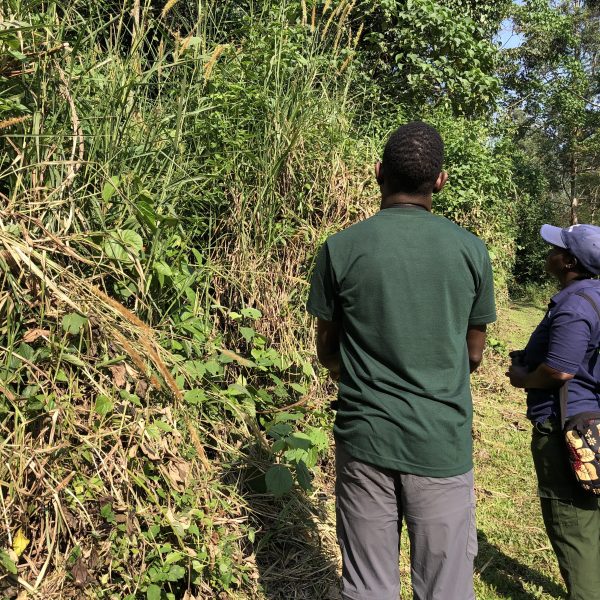
Birding the BEARC Trail
Our starting point for the bird walk was Kibale Forest Lodge which we set as our location in the eBird app. It was a sunny morning so we were able to spot 32 bird species while exploring the BEARC trail.After this we all ended up at Kibale Forest Lodge where we birded for some time in the lodge gardens and then stopped our checklist in the app.
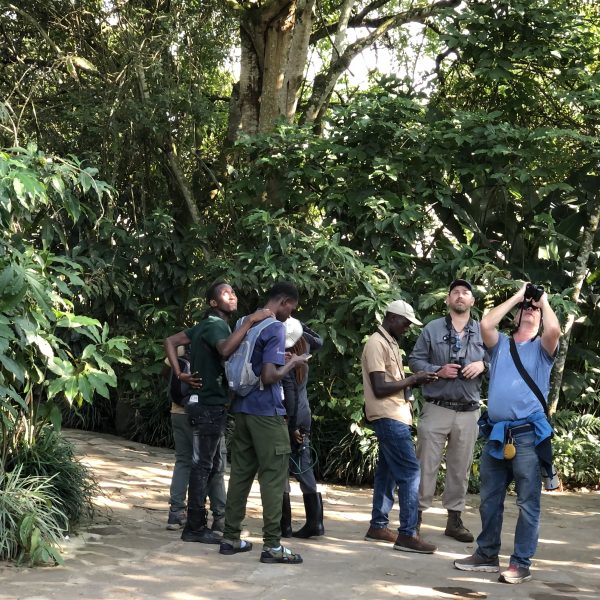
Birding in the lodge gardens
The next session involved us sharing our observations with the rest of the team, Cullen went ahead and explained more about what one can do after recording their observations. In this session we learnt how to submit our checklists, how to enter the number of people that you did birding with (for our case it was 3) and how to make sure that we have set the right location, We also had a Q & A session where attendees were able to ask questions about eBird and the Merlin ID app.
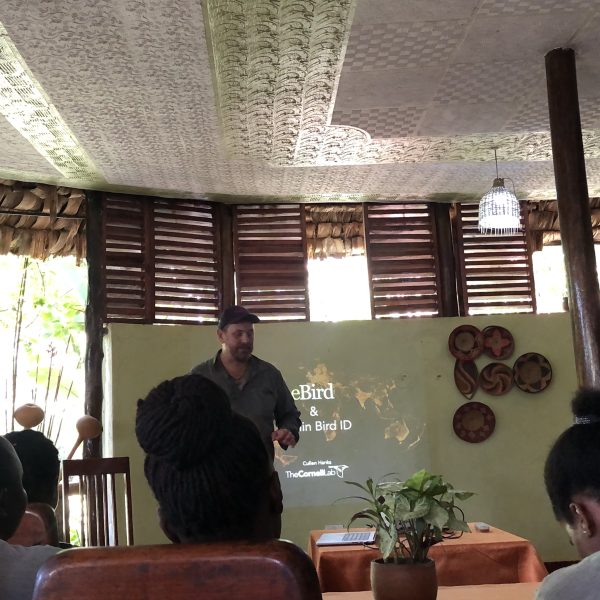
Cullen taking us through an eBird presentation
We then had a tea break and lunch break later. The team at Kibale Forest Lodge served us a delicious local buffet lunch.
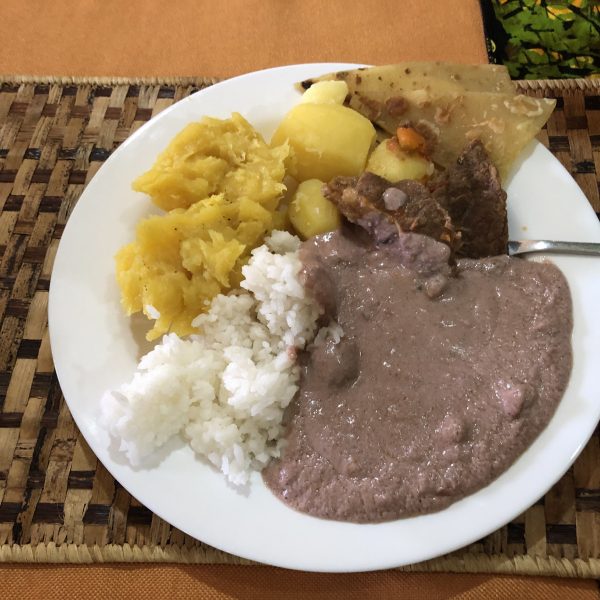
Lunch at Kibale Forest Lodge
In the afternoon we spent about 2 hours at the lodge at leisure, during this time attendees were free to interact with the facilitators, network, catch up and also bird in the Kibale Forest Lodge gardens. At 4:00 pm we went afternoon birding for 2 hours for chances of looking out for other species of birds.
Together with my group we birded the BEARC trail but this time we did birding on a different section of the trail so our starting and end point was different. We still did a checklist of the all the birds that we were able to see.
These are the birds that were on my checklist;
Red-eyed Dove, Great Blue Turaco, Blue-spotted Flufftail, Hadada Ibis, African Harrier-Hawk, Yellow-rumped Tinkerbird, Double-toothed Barbet, Lesser Honeyguide, Gray-green Bushshrike, Green Crombec, Green-backed Camaroptera, Barn Swallow, Angola Swallow, Lesser Striped Swallow, Slender-billed Greenbul, Pale-throated Greenbul, Little Greenbul, Common Bulbul, Gray Tit-lycatcher, Whote-browed Robinn-chat, Snowy-crowned Robin-chat, Olive Sunbird, Olive-bellied Sunbird, Black-headed Weaver, Gray-headed Nigrita and African Firefinch.
We then returned to the lodge, shared the species that we had seen while birding with the rest and also listened to the checklists of the birds that other attendees had recorded. Day 1 ended on a fantastic note as we took photos for memories, we left the premises at around 6:30 pm.
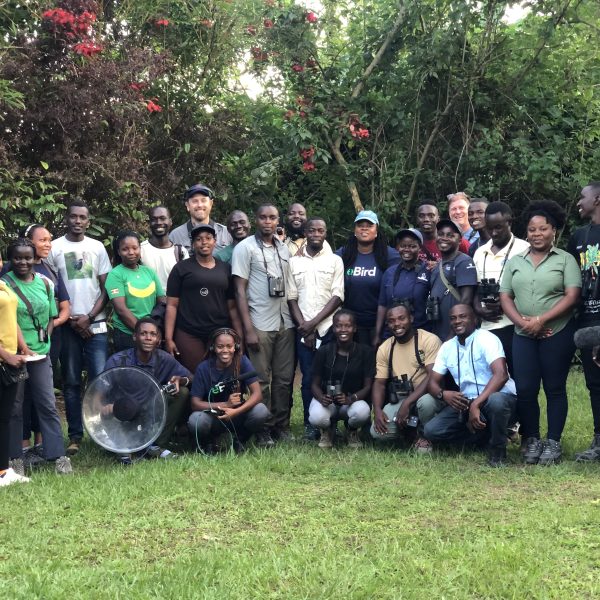
Group photo taken at the end of Day 1
Day 2 started at 7:30 am though a lot of us arrived before that time. Day 2 started at KAFRED (Kibale Association for Environmental Development) which is situated at Bigodi Wetland Sanctuary. Bigodi Wetland Sanctuary is a top birding site that is usually visited while birding in Uganda. The KAFRED trail is a well-known trail for birding in Bigodi. Over 200 species of birds have been recorded at Bigodi and this makes it a rewarding bird watching site especially if you are accompanied by a knowledgeable local bird guide.
We were able to record and observe the following species of birds while on our 2 hour bird walk;
Tambourine Dove, Ross’s Turaco, White-spotted Flufftail, Shining-blue Kingfisher, African Pygmy Kingfisher, Blue-breasted Kingfisher, Yellow-rumped Tinkerbird, Double-toothed Barbet, Brown-eared Woodpecker, Gray Parrot, Papyrus Gonolek, Western Nicator, Black-headed Paradise-Flycatcher, Green Crombec, Red-faced Crombec, Tawny-flanked Prinia, Red-faced Cisticola, White-winged Swamp Warbler, Lesser Striped Swallow, Slender-billed Greenbul, Toro Olive-Greenbul, Green Hylia, Green White-eye, Brown Illadopsis, Gray-winged Robin-chat, Green-headed Sunbird, Scarlet-chested Sunbird, Black-necked Weaver, Bronze Mannikin, Black-and-white Mannikin, Gray-headed Nigrita, Northern Gray-headed Sparrow and Yellow-fronted Canary.
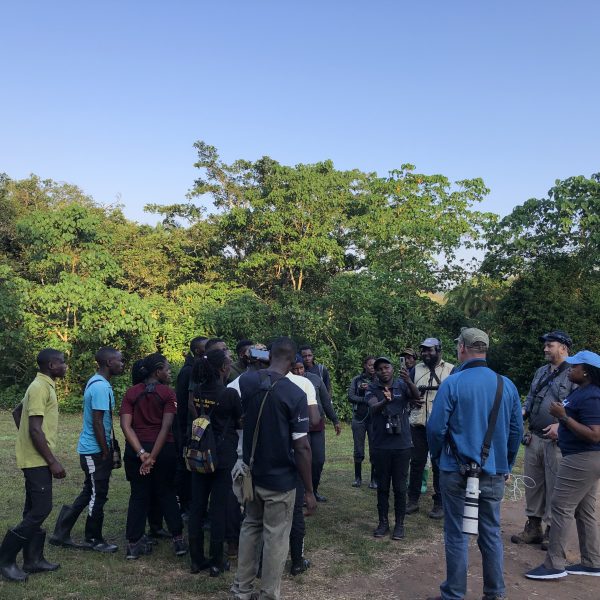
Morning of Day 2 at KAFRED

We ended our morning birding at Kibale Forest Lodge and stopped our individual checklists on arrival. The next session was still led by Cullen and Marshall and during this session we discussed the importance of sound recording, the need to upload sound records of birds to Merlin Bird ID and how to better use the app. Cullen shared that uploading calls and sounds to Merlin Bird ID helps to train the app and inform the software of bird calls, he therefore encouraged us to also record and learn how to upload calls/sounds to Merlin Bird ID.
We had presentations from both facilitators on how to use and interpret the ebird.org website, the information shared was very helpful and made the website less complex because most of us agreed that we found the website difficult to navigate on our first interaction. After this session we had lunch and then spent the afternoon at leisure. Davis from Uganda Safari Guides Association (USAGA) which is one of the partner organization gave us closing remarks and this marked the end of the 2 Day workshop. It was a fruitful workshop and I believe that all of us left with enough information on the eBird app and how to use it to record our bird observations. I look forward to a future where conservation of birds is prioritized and a future where birds are able to exist without threat!

